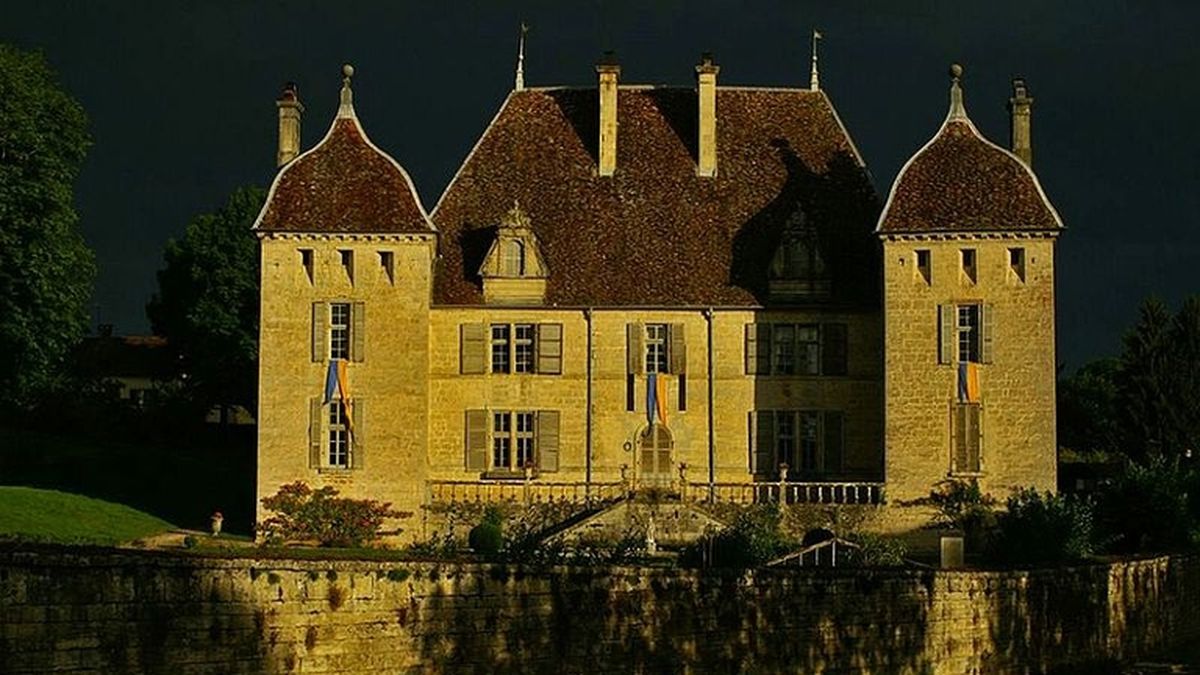 The castle | ©PEJKERT Michel / CC-BY-SA
The castle | ©PEJKERT Michel / CC-BY-SAFilain means in Latin fons lanae, “Laine’s fountain”. Laine is a little river running through the village! Anyway, in the 15th century, the fortress was owned by Andelot lords, then by Sacquenay, who raised a small stronghold flanked by 4 towers on corners.
One century later, this family launched a huge building site: first, the construction of two Renaissance buildings, next to the old fortress.
And what did they do in those buildings? They fit out a nice and huge chimney (we still can see it) in the salle des gardes, with its big sculpture in the round: stag hunt. Oh, did you notice? Look at the stag antlers! Those are real ones! A real masterpiece...
In the ground floor, the family raised a Renaissance gallery, then, one century later, the new owners, the Cointet, altered the façade overlooking the formal garden, the one with the high roof and the two square towers.
In 1670, the Cointet sold their castle to Jean-François de Camus: this chap added deck roof on the two towers. Deck roof? In French, we say à l’impériale, because those roofs look like German emperor’s crown, crowned by a ball...
This kind of roof is pretty common in Franche-Comté... But let’s go back to our point... he also removed the drawbridge (old fortress vestige) and raised the staircase overlooking the garden. This one was surrounded by medieval moats... moats he filled in! Well, Camus really raised the current castle!
Then, during the Revolution, the last Camus member, Martin, sold Filain to general Marulaz. A great man! He was born Jacob-François Marola (Marulaz was his gallicize name) and was in every Napoleon’s wars.
Baron then count of Empire, he saved Besançon city from Prussian siege in 1814: a local hero! His name is carved on the arc de Triomphe, in Paris... Our general died in Filain, in 1842.
